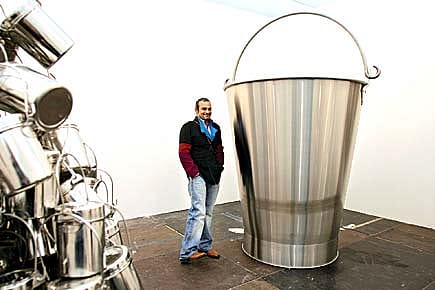Where’s All the Money Gone?

The art mart has crashed. Only conspiracy theories and blame have survived the Indian art boom
Close to midnight on 31 March, a short circuit caused a fire inside the South Mumbai gallery space of Saffronart, an online auction house. Some 14 vehicles, including five fire engines, an ambulance, a breathing apparatus vehicle, an ultra pump, a tanker and jeeps carrying officials, descended on the scene. According to Station Officer Sandesh Rane, there was little damage to the company's assets. The matter wasn't reported in any newspaper.
Yet, it initiated libelous whispers among the city's art fraternity, who smirk at the timeliness of an accident that endangered expensive works insured during the only boom in Indian art history. "This is the first downturn the art market has seen, and this chatter comes from their own situation," says Dinesh Vazirani, Saffronart's owner. "Galleries didn't worry about primary prices before, but now some auction results are even lower than gallery prices."
Till a year ago, the art market was flooded with speculators buoyed by a parallel boom in the financial market. Galleries set prices based on that mood, and most artists mass-produced. Even luminary Atul Dodiya was criticised for editing too little. As one gallerist said, "He needed a break!"
Then came the downfall. In October 2008, the ArtTactic Indian Art Market Confidence Survey found confidence had dropped 23 per cent since May 2008. March 2009 New York sales were introduced by anorexic catalogues with low-quality contemporary works, and those who dared consign a Subodh Gupta were forced to sell for less than the estimate.
Now that the price-party is over, auction houses blame gallerists for bad pricing practices, and gallerists say auction houses aren't as transparent as they make themselves out to be. "Suddenly, artists are not making money, and everyone's worried," says artist Bose Krishnamachari.
There's also the Icarusian fall of Bodhi Art. Starting 2004, businessman-collector Amit Judge opened galleries in five locations; today, only the one in Mumbai survives. "Amit did a good job of trying to educate and take Indian art global," says Krishnamachari. "But he made a mistake trying to grow too fast, and suddenly closing invites criticism."
Having said that, there were at least two sputters of cooperation among the city's art frat recently. To control costs, usually neurotically-secretive galleries made joint shipments to February's Arco art fair in Spain. Then on 22 March, galleries banded together for 'Art On A Sunday', keeping spaces open through a weekend to increase footfalls.
Gallerist Mortimer Chatterjee says, "The greed that was there last year has been brushed under the carpet." Before it rears its head again, buy Indian art.
